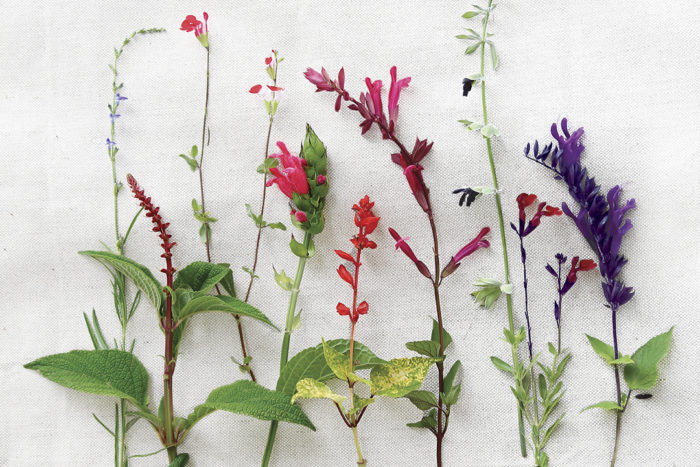
Patience is a virtue, as I’ve been reminded too many times. Whether that’s true or not, I waited over 20 years to evaluate tender salvias, which are hardy in warm regions but not reliable in my Zone 5 winters. My craving for all types of salvias is never-ending—I’ve grown the hardy perennials and the colorful annuals—but I covet the beguiling tender salvias most of all. Over the past three years, a dazzling salvia-filled bed delighted us at the Chicago Botanic Garden from the warm days of early summer to the first frosts of autumn. Perhaps the long wait made it all the sweeter, because it was truly a colorful, eye-opening, and lively trial. Months of rainbow-hued flowers, habits great and small, and leaves in diverse colors and shapes—each with its own distinctive scent—are hallmarks of the tender salvias. Our goal was simple: to discover the best tender salvias that are vigorous enough their first year in the garden to make excellent annuals in cooler zones. From early summer to late fall, we enjoyed seemingly endless days of colorful flowery splendor, and we only scratched the surface of the hundreds of lush and exotic selections available by mail order and in garden centers. Rather than settling for off-the-shelf annuals next summer, look for a few choice tender salvias to turn up the seasonal color and drama.
Top performers to try
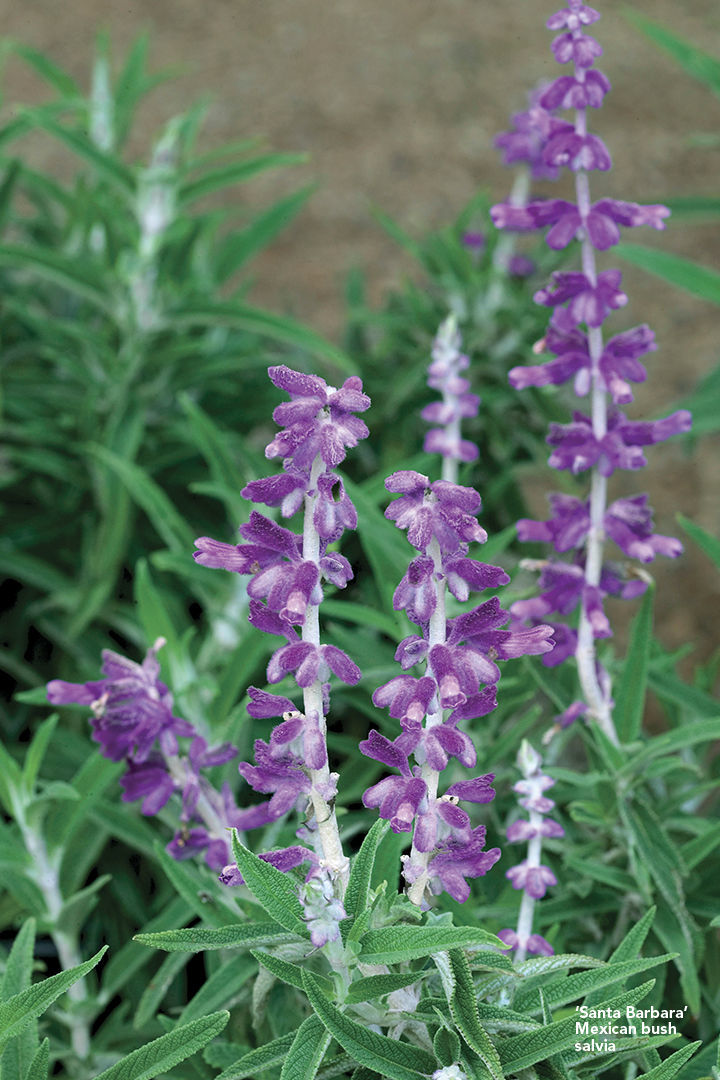
I first saw Mexican bush salvia (S. leucantha) in San Francisco, where its fuzzy purple-white flowers were an unexpected sight in late autumn. Naturally, I wanted it in the trial but thought the late bloom would be a problem for us; instead, its downfall was that its tall, brittle stems snapped in strong winds. While the contrast in flower and calyx colors is not as striking as the species, ‘Santa Barbara’ Mexican bush salvia (S. leucantha ‘Santa Barbara’) is a superior compact selection with light purple flowers and fuzzy, dark purple calyces. Flower production was exceptionally heavy from early fall to frost. The narrow, downy, gray-green leaves were attractive all season, which is an important ornamental feature given the late bloom period. The habit was diminutive by comparison to the species—nearly 20 inches shorter and narrower—and, more importantly, the stems were not as fragile.
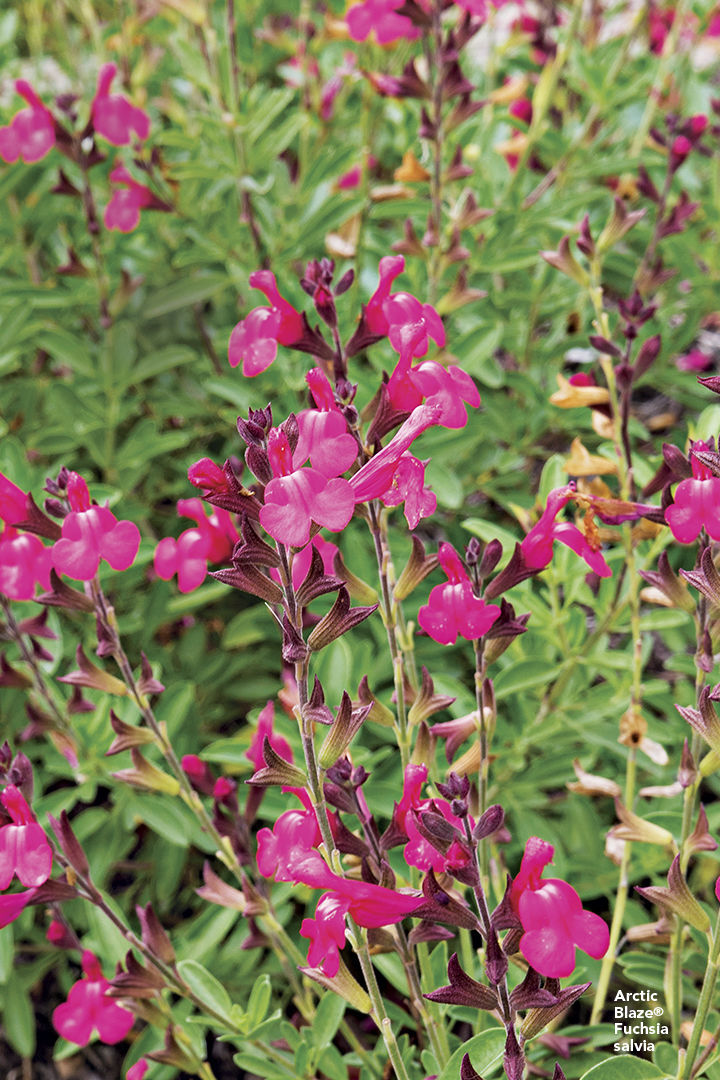
Arctic Blaze® Fuchsia salvia (S. ‘Novasalfuc’) was one of three strong-blooming selections in a series featuring exceptional habit uniformity. Deep reddish pink flowers with purplish calyces were plentiful from early summer to season’s end. All kinds of pollinators were regular visitors on these selections, but bees were particularly busy in midfall. All of the Arctic Blaze® salvias had compact bushy habits with purplish stems, but Arctic Blaze® Fuchsia was the smallest, sporting the best and tightest habit. Unlike some salvias, Arctic Blaze® salvias have square, flexible stems, so breakage was not a problem in our windy site.
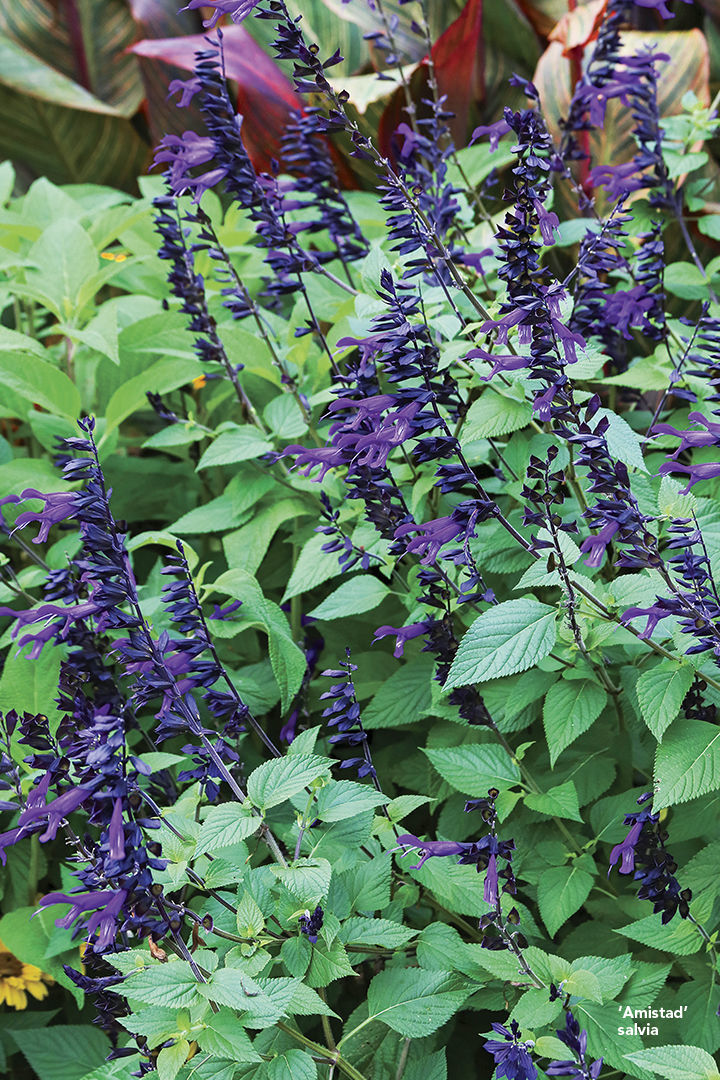
‘Amistad’ salvia (S. ‘Amistad’), known commonly as the friendship salvia, was the touchstone for comparing tender salvias. From early summer to hard frost, a bounty of purple blossoms nestled in nearly black calyces graced robust stems; it was one of the biggest salvias in the trial. The prodigious floral show and vigorous habit were impressive each summer despite never being fertilized. The large, swarthy flowers were a constant draw for hummingbirds, bees, butterflies, and other beneficial pollinators. If time was short when giving a tour, I made a beeline to ‘Amistad’ salvia, since it so perfectly embodied the best qualities of the tender salvias.
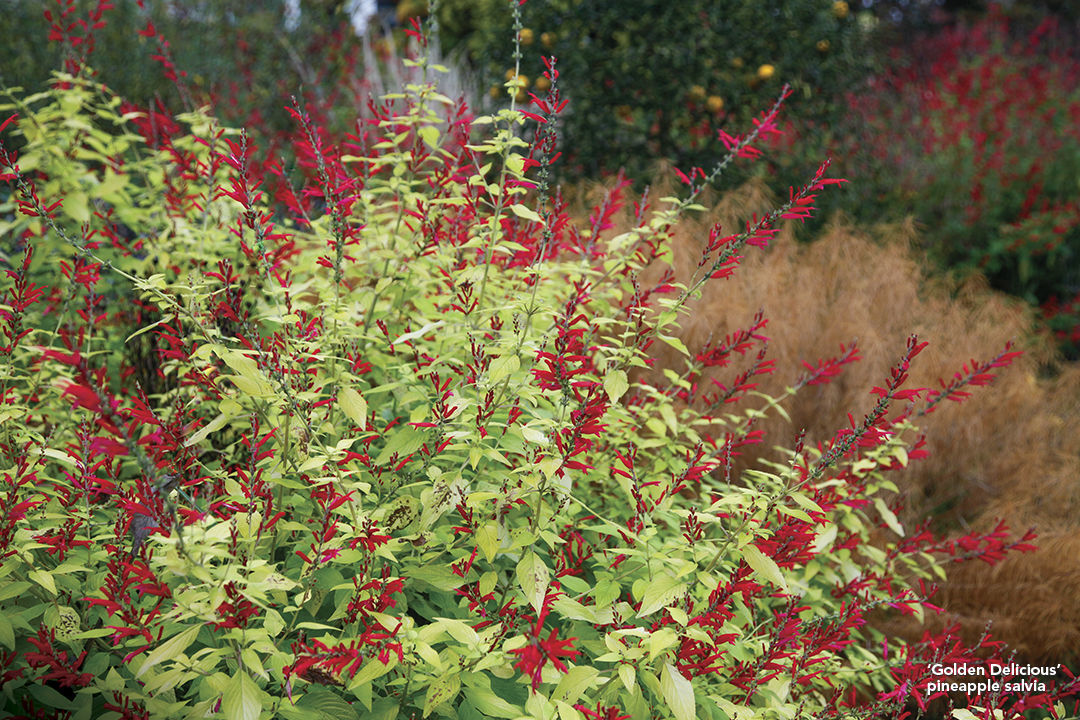
The sweetly scented, sumptuous yellow leaves of ‘Golden Delicious’ pineapple salvia (S. elegans ‘Golden Delicious’) would be gratifying on their own for most gardeners. But upon seeing its fiery red flowers arching over the radiant foliage, you would understand that something was missing. Unfortunately for gardeners in the far north, ‘Golden Delicious’ begins blooming almost too late except in mild autumns with a late frost. If you are lucky and the weather holds, the full glory of the sultry, dark red flowers blazing above the golden foliage is awe-inspiring. The leaves can scald in strong sunlight, so some afternoon shade is best, especially in warmer regions. ‘Golden Delicious’ won’t disappoint, whether in a mixed container, massed, or on its own.
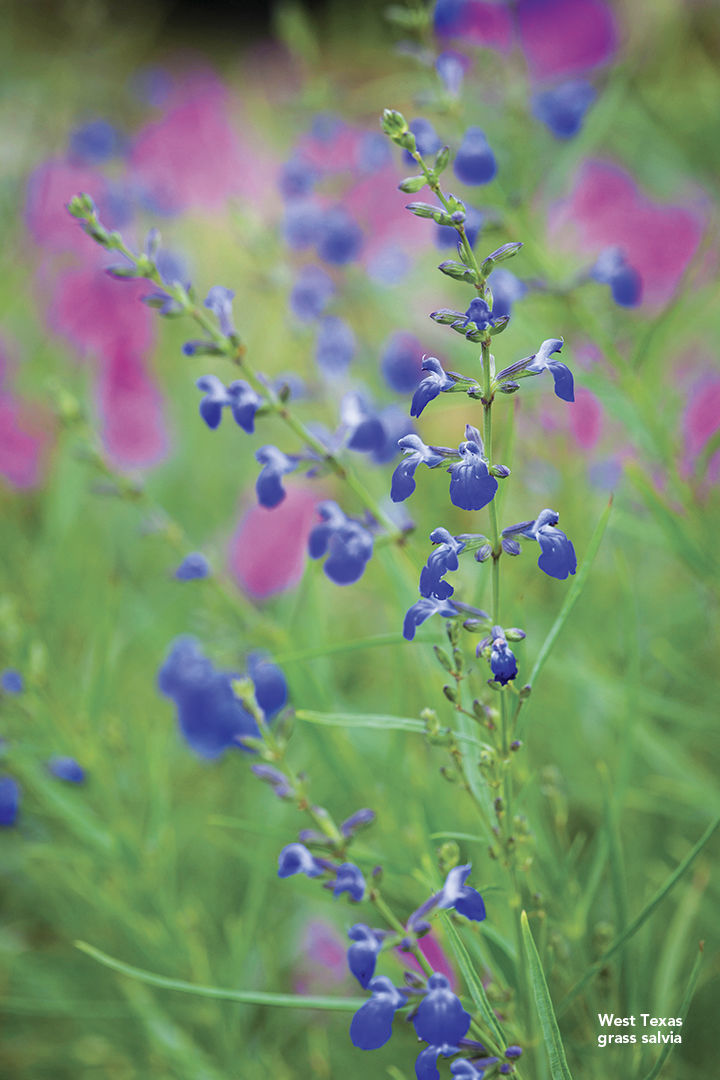
With its pungent, fine-textured grassy foliage and strong shrubby habit, West Texas grass salvia (S. reptans) carried
the show for most of the summer. Long before one flower ever appeared, plants reached a bushy 39 inches tall and wide. The cobalt blue flowers began opening in midsummer and were an exquisitely cool blue that attracted much attention from visitors despite the flowers’ small size. West Texas grass salvia is the only salvia that proved to be truly cold-hardy in Chicago. This was one of my favorites every summer due to its delicate leaves and tidy habit, but the late blue flowers were my true weakness.
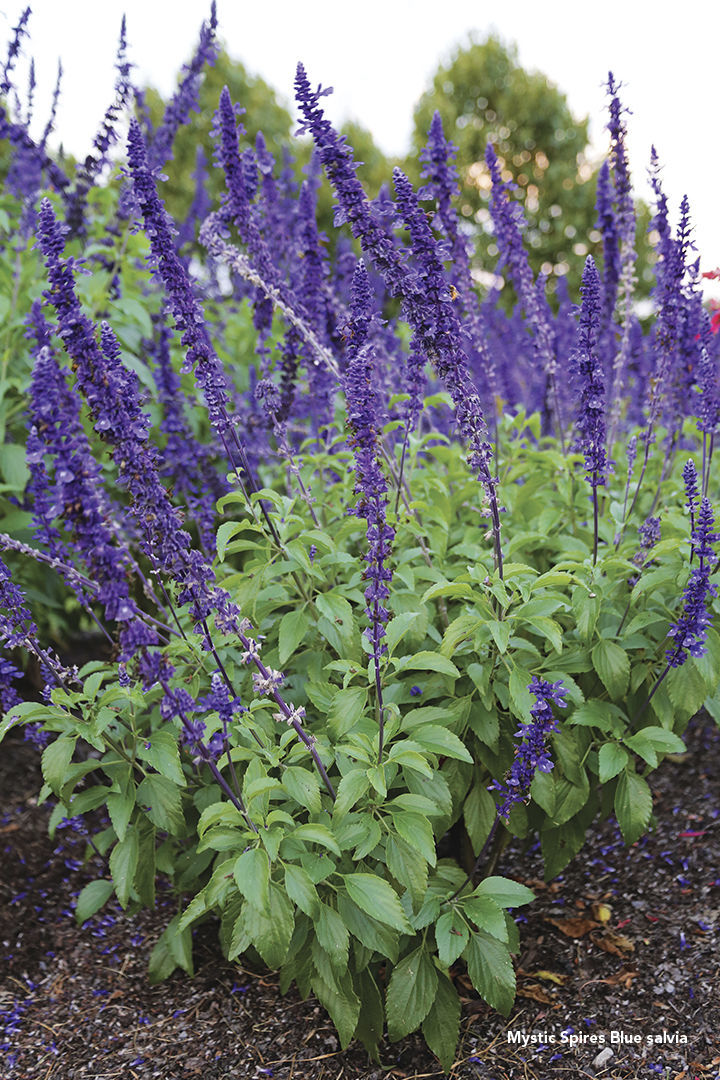
Mystic Spires Blue salvia (S. ‘Balsalmisp’) was not originally planned for the trial, but my friend Janice urged me to add it. I’m so glad I took her advice. Tall spires of purple-blue flowers with violet calyces adorned compact, well-branched plants from late spring to frost. Mystic Spires Blue and ‘Indigo Spires’ (S. ‘Indigo Spires’)—look-alikes of a sort—were planted side by side, so comparing them was easy. In midfall when pollinators were largely ignoring ‘Indigo Spires’, Mystic Spires Blue was aflutter with butterflies and humming with bees. The prolific floral stems made up about half of its modest height. Had it been on its own, the heftier ‘Indigo Spires’ may have garnered all my attention, but along with the pollinators, I liked Mystic Spires Blue better.

Autumn salvia (S. greggii) was well represented in the trial by 27 selections with flowers in lovely shades of red, pink, violet, purple, and creamy white. Mirage™ Cherry Red autumn salvia (S. greggii ‘Balmircher’) was one of the very best performers and my personal favorite. The dark, cherry red flowers were beautiful and bountiful from early summer to frost. It also had a dense, compact habit, whereas many other selections had comparable but looser habits. While autumn salvias didn’t overwinter for us, seedlings sprouted each spring in our trial beds. They were not abundant, however.
UNCOMMON OPTIONS WORTH TRACKING DOWN
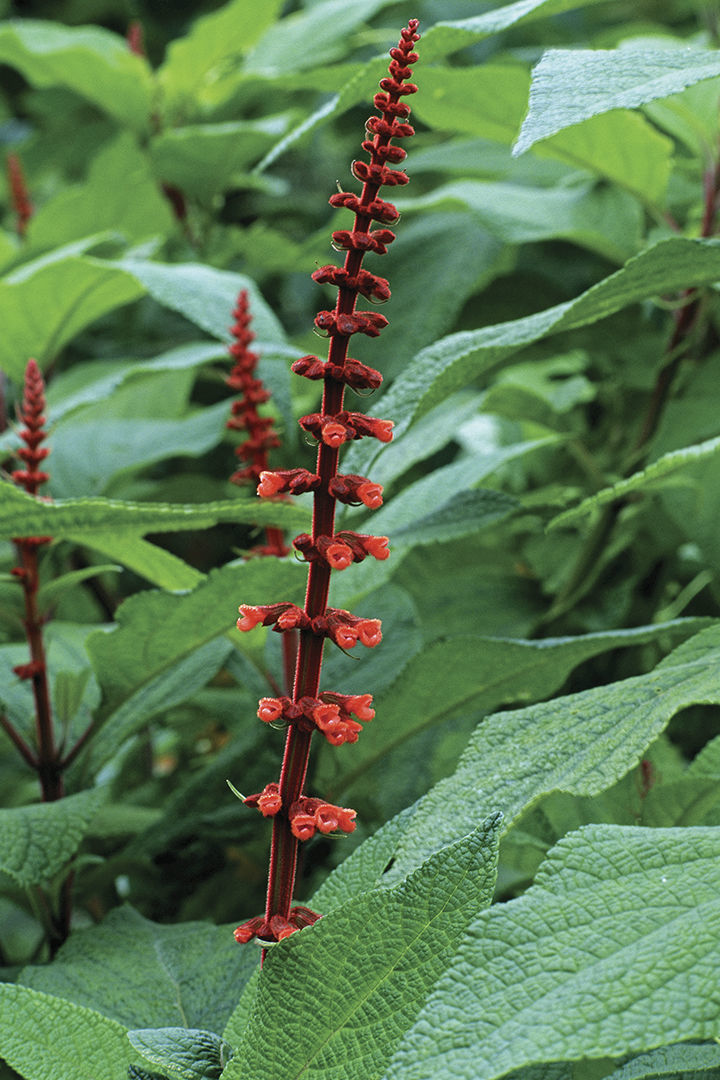
Red velvet salvia (S. confertiflora) was hands-down my favorite in the trial. It possesses a bodacious quality that was accentuated greatly by its vibrantly colored flowers. Lush corrugated leaves, dark red stems, and a vase-shape form gave it a handsome summer character. In dramatic fashion, bright red-orange flowers clasped in fuzzy, dark, red-orange calyces made their first appearance in early fall. The small flowers were crowded together on slender velvety red wands that jutted above the dark green foliage. Like all late bloomers, red velvet salvia has an eye-popping floral display that was at the whim of the capricious autumnal weather. Our best show was two fabulous months of flowering in 2017 before a killing frost hit on November 22. But no matter how long or short the bloom, I heartily recommend red velvet salvia to any and all adventurous gardeners.
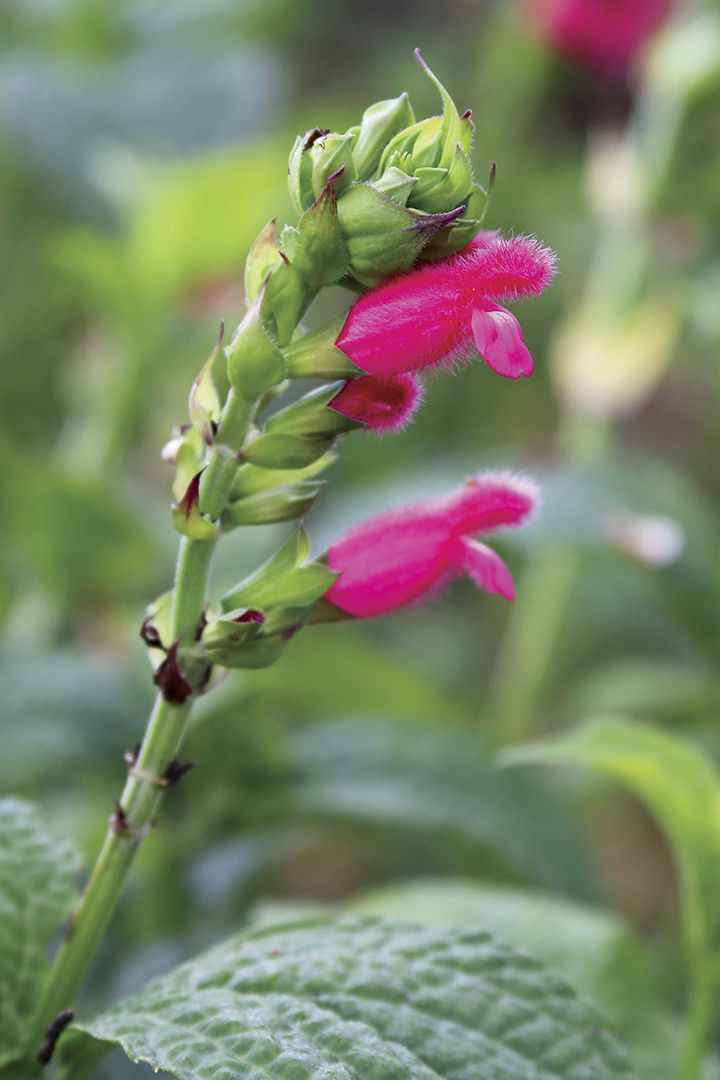
Bolivian salvia (S. oxyphora) is just one of many exotic salvias in the trial that come from Central and South America. I was captivated by the architecture of the large green terminal flower buds before it bloomed but was not prepared for the hot pink spectacle that followed. Beginning in midsummer, über-fuzzy bright pink flowers popped out, blooming steadily to frost. I never lost my fascination for the flower structure and bloom pattern of this salvia. Glossy green leaves with a wrinkly texture were a handsome foil for the whimsical flowers. Bolivian salvia had a strong bushy habit, although the stems were a little brittle and occasionally damaged by wind. I can’t say I ever noticed a hummingbird on Bolivian salvia, but it always had so many human visitors that I would’ve had trouble seeing one.
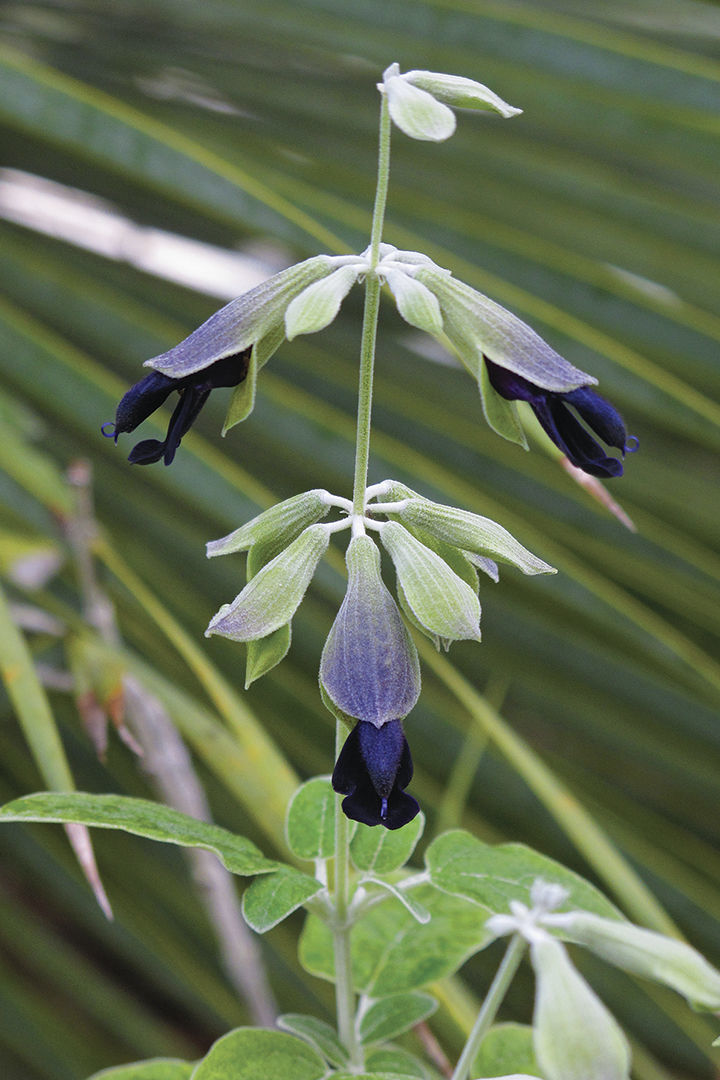
Of all the salvias, I think Andean silver salvia (S. discolor) had the most charismatic flowers. Its deep purple-black blossoms peeking shyly out of pendulous silvery chartreuse calyces were both exquisite and curiously subtle at the same time. The downy calyx looked either more silver or more green depending on the quality of ambient light. The stems and undersides of the green leaves were bright white and sticky, with a sweet bubblegum scent. Its habit was bushy to loose and irregular, which was expected because it’s actually a scandent, or weakly climbing perennial. I would grow this in a container that’s perfectly placed for up-close viewing.
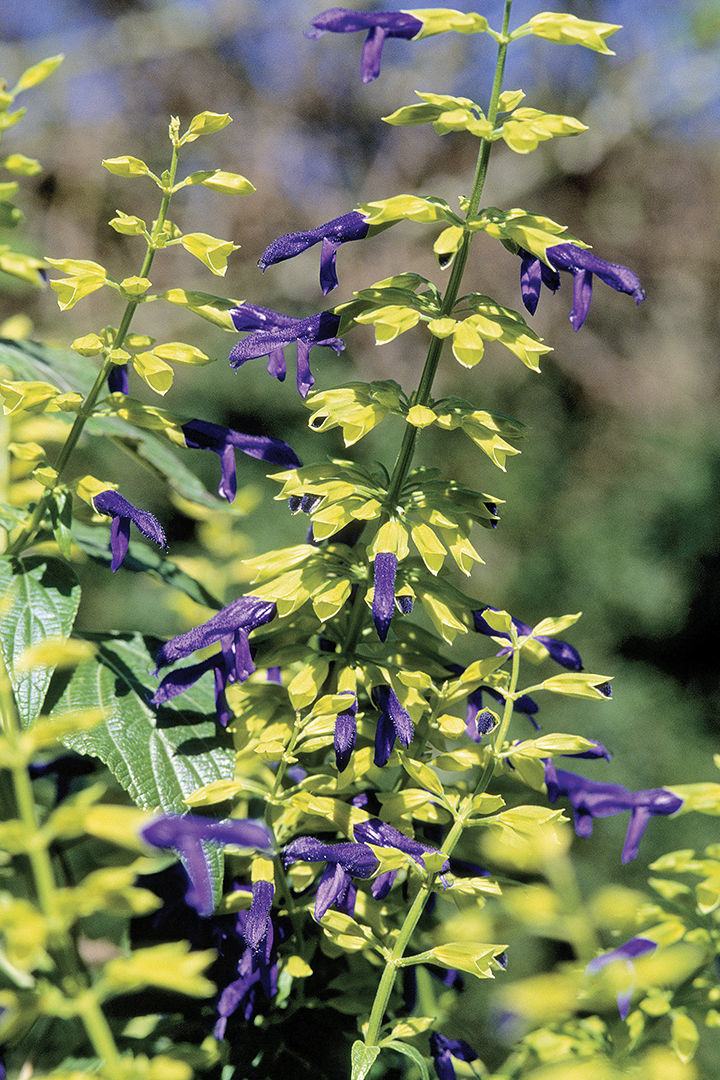
At nearly 60 inches, ‘Limelight’ Mexican bush salvia (S. mexicana ‘Limelight’) was one of the tallest plants in the trial and will likely be larger in warmer places. Its glossy, heart-shape leaves and imposing vase-shape habit provided bold-texture and lushness all summer. Generous spikes of long, dark, purple-blue flowers offset by bright chartreuse calyces were the crowning touch. While borne in profusion, the flowers didn’t open for us until midfall, which matters a great deal if a frost comes early. In a warm autumn when frost was delayed, the flower show was phenomenal.
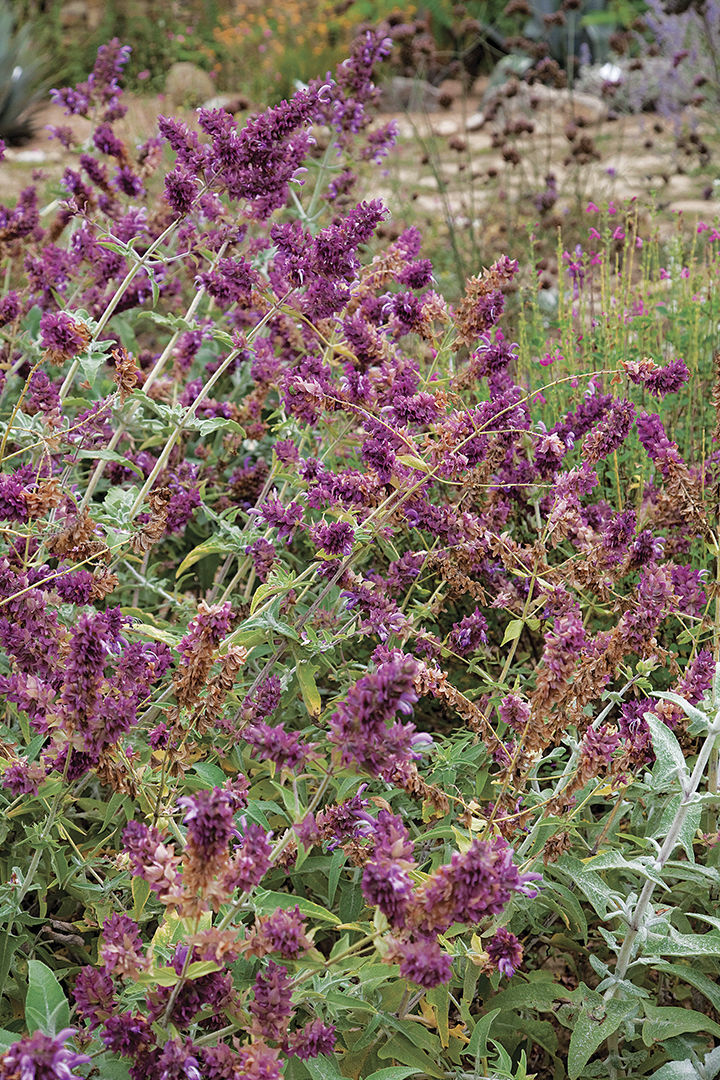
The fuzzy, bright, silvery white leaves of Canary Island salvia (S. canariensis var. candidissima) looked more like Jerusalem sage (Phlomis fruticosa, Zones 8–10) or lamb’s ears (Stachys byzantina, Zones 4–8) than any of its neighboring salvias. Clusters of light lavender flowers held in purple calyces topped the argent plants from midsummer to frost. The densely bushy habit suffered at times from the heavy flowers weighing down the stems, looking fountainesque at best and open bowl-like at worst. Canary Island salvia’s woolly character suggests its affinity to sunny, dry gardens. Try it with other heat-lovers in a container where water can be controlled.
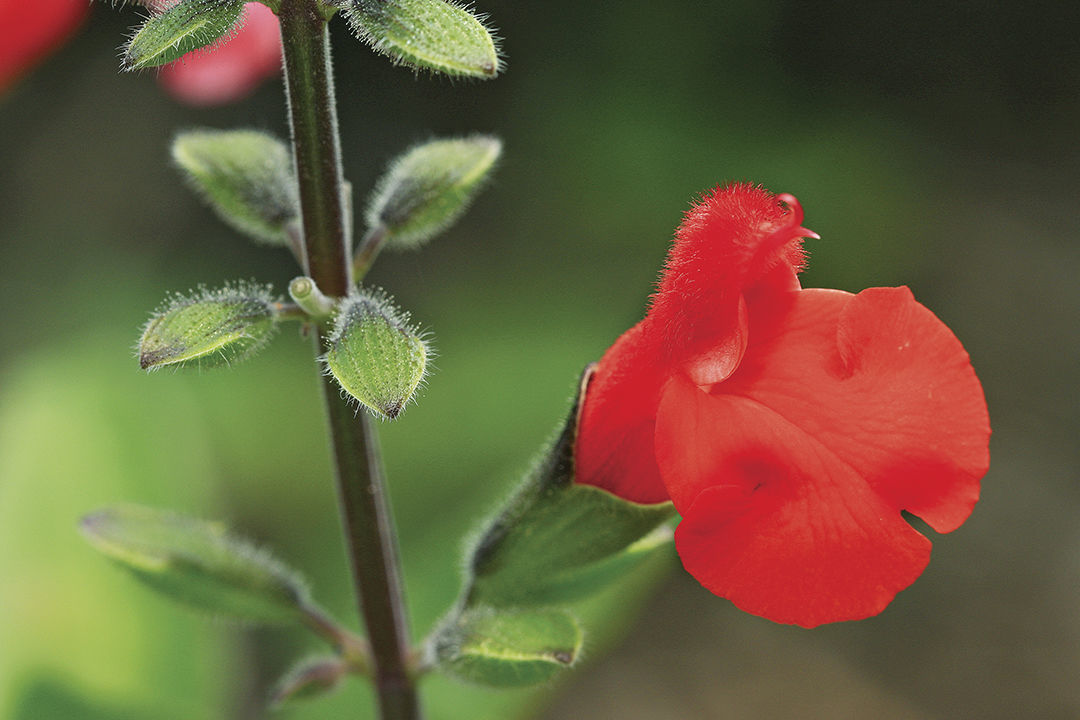
The large, dark, orange-red flowers and fuzzy black-purple calyces of ‘Painted Lady’ eyelash salvia (S. blepharophylla ‘Painted Lady’) were beyond sexy. The exotically colorful blooms were profuse from early summer to frost, but they stalled a bit during the hottest periods, indicating that some afternoon shade is ideal. Eyelash salvia’s name comes from the tiny hairs that line the margins of the glossy leaves. ‘Painted Lady’ boasts reliable dark purple stems and purple-tinged leaves that varied in intensity throughout the summer. Our plants had neat mounded habits and never exhibited the rhizomatous nature ‘Painted Lady’ has in places where it is a perennial. The flamboyant flowers and glossy foliage make an uncommon and thoroughly satisfying combination.
See the comparison chart for all 107 salvias tested in this trial.
Tender salvias at a glance
Salvias are generally undemanding, easy-care plants. However, they do have a series of unique traits that make them particularly noteworthy.
▸ Conditions: They grow best in moist, well-drained soils, although some—such as pineapple salvia, Canary Island salvia, and West Texas grass salvia—are drought resistant. Partial to high shade is recommended in hot climates for autumn salvias, eyelash-leaved salvias, and Bolivian salvia, among others.
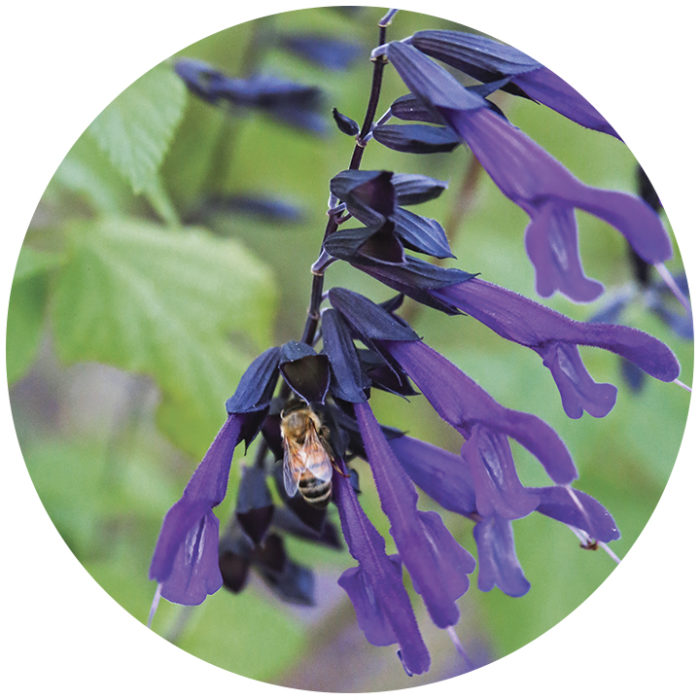
▸ Pollinators: Hummingbirds flitting around the salvias caused quite a stir with visitors and photographers alike. Near collisions were a daily and often comical happening. Although our observations were anecdotal, what looked to be the hummingbirds’ slight preference for blue and purple flowers was intriguing. Bees and butterflies were more catholic in their tastes, exuberantly sampling all colors, including blue (pictured).

▸ Diseases/Pests: Although the salvias were trouble free, they can be affected by powdery mildew, rust, stem rot, fungal leaf spots, whiteflies, aphids, and spider mites. Most salvias are resistant to deer and rabbits because of their scented foliage.
▸ Deadheading: Removing spent blossoms promotes longer flowering and is often recommended, but we observed continuous bloom all summer even without pruning or fertilizing.

▸ Native range/Hardiness: Many of the tender salvias come from south of the U.S.-Mexico border, so winter hardiness was not expected in cooler zones. The only salvias with one or more plants surviving our Chicago winter were ‘La Trinidad Pink’ (S. microphylla ‘La Trinidad Pink’, pictured), cedar salvia (S. roemeriana), and West Texas grass salvia.
▸ Frost: The salvias reacted differently to mild frost—some quickly turned black, while others wilted or dropped leaves yet continued to flower until a killing frost.
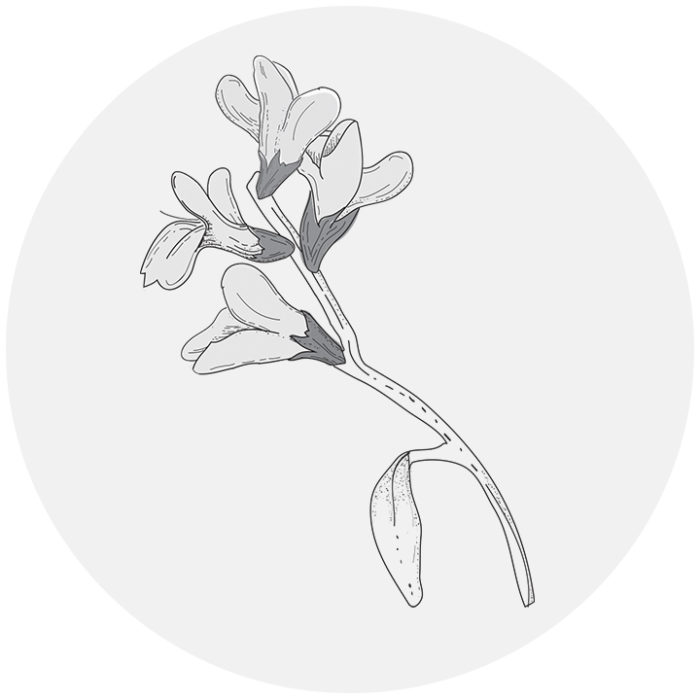
▸ Flowering: Starts in early summer and ends with frost. Salvias’ floral displays pack more punch than those of their perennial and annual siblings because the two-lipped flowers are cupped in colorful, sometimes prominent calyces. The calyx (pictured) can be an analogous or a contrasting color to the flower, and it usually remains vibrant and persistent after the flowers have fallen away.
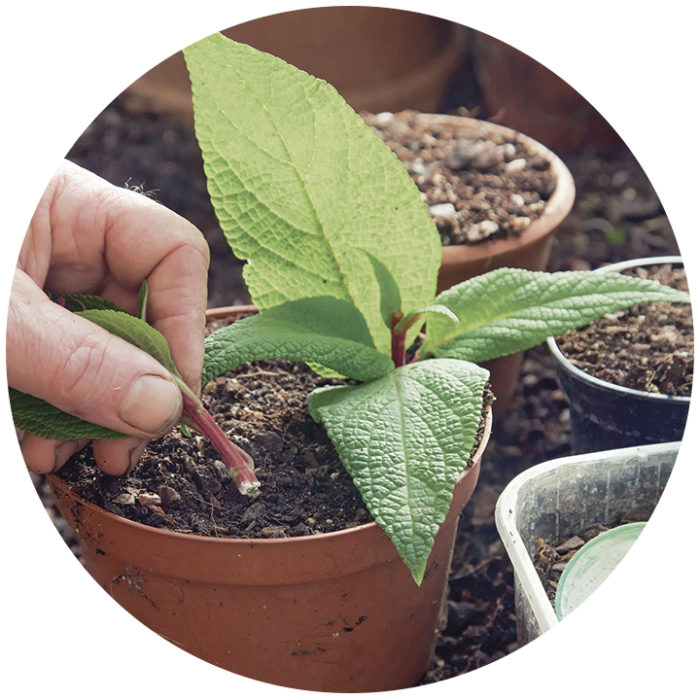
▸ Propagation: This is done by taking tip cuttings and rooting (pictured) or by seeding.
Richard Hawke is plant evaluation manager at the Chicago Botanic Garden in Glencoe, Illinois.

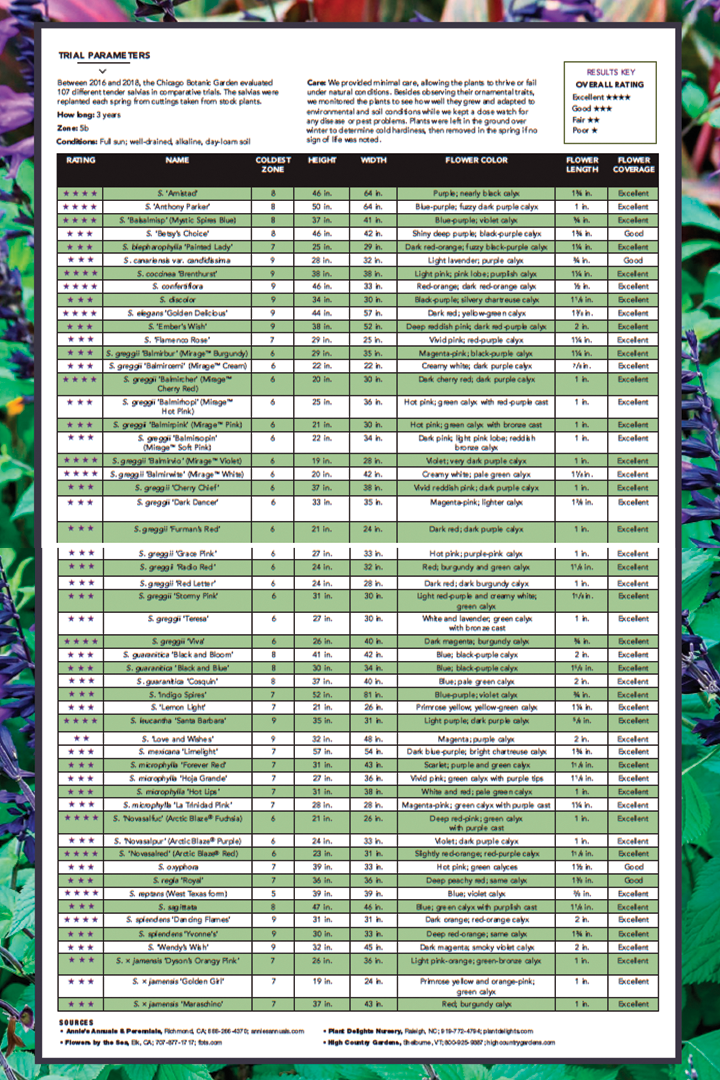
















Comments
Log in or create an account to post a comment.
Sign up Log in